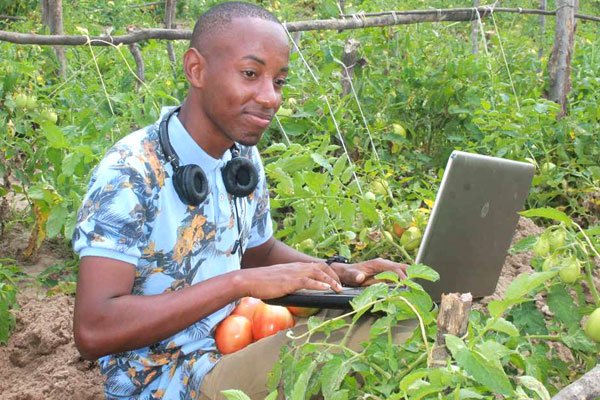By Charles Dhewa
There has been a general tendency by developing countries to cherry-pick and deploy some components of Information and Communication Technologies (ICTs) in the agriculture sector. Combining infrastructure and ICTs could play a more catalytic role than just using ICTs for promoting extension services. If African countries are going to produce sufficient agricultural commodities, how can ICTs and infrastructure and ICTs fuel economic growth and the best Return on Investment for farmers?
Guiding principles
- Making leadership support visible – What type of support is leadership providing for infrastructure and ICTs? Leadership should be visible. A national agricultural budget should have a clear allocation for infrastructure and ICTs along entire value chains, not just on the production node.
- Shared language – When talking about policies, currency, monetary policy, how are many value chain actors contributing? If the majority of value chain actors do not understand what is happening due to complicated terminologies, implementation will not bear positive fruits.
- Create space for many value chain actors – Many African countries are still using colonial terms like informal, smallholder, middlemen, Koronyera and other derogatory and demeaning terms to classify economic actors. Each actor’s role should be cleared defined in ways that reveal contribution to the economy. The existence of traders and informal markets has a meaning that needs to be understood. They would not be available if they did not meet a need.
- Simplify contribution pathways – Many farmers and other value chain actors do not contribute to talk-shows and conferences where their circumstances are discussed. What forms of media can enable farmers and traders to contribute? How can ICTs help?
- Focus on action – Most policies end at policy level with no actionable stems. Catalyzing is about action.
- Simplify connection – What are the pathways of creating networks? Currently in much of Africa, NGOs are doing their thing, farmers are on their own, companies on their own and government departments on their own. There are no sustainable connectivity pathways.
- Challenge the mindset – Traditional mind sets have held sway for generations and that is limiting innovation. For instance, the notion of irrigation schemes needs revamping in people’s mindset if it is to integrate modern infrastructure and ICTs. So far irrigation development is associated with sophisticated machinery only and irrigation schemes. For how long will elders continue associating social media with the youth when it has several positive uses that should be harnessed?
- Recognition and constructive feedback – accepting constructive criticism and acknowledging other actors’ contribution can incentivize knowledge sharing. Someone should be awarded a prize for sharing knowledge through ICTs just as farmers win accolades for achieving higher yields.
- Preserving community status quo – Interventions like food aid tend to disrupt the status quo and social fabric in many communities. For instance, when villagers and farmers start receiving United States dollars to go and buy their food in a community where foreign currency is not a major medium of exchange, social norms and cohesions are weakened because using foreign currency at community level is not part of a resilient strategy.
- Track and capture added value along value chains – What value is each intervention adding?
